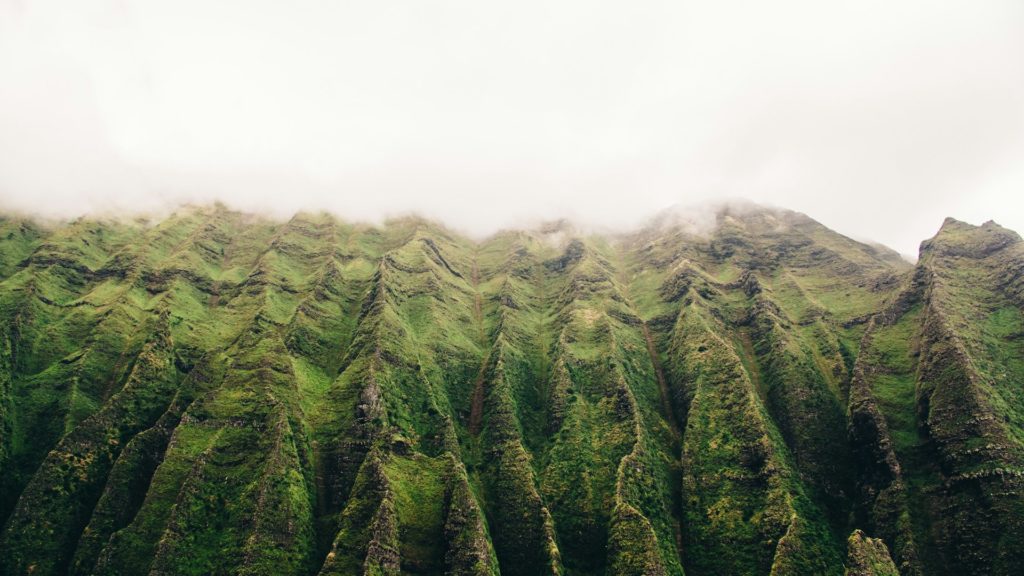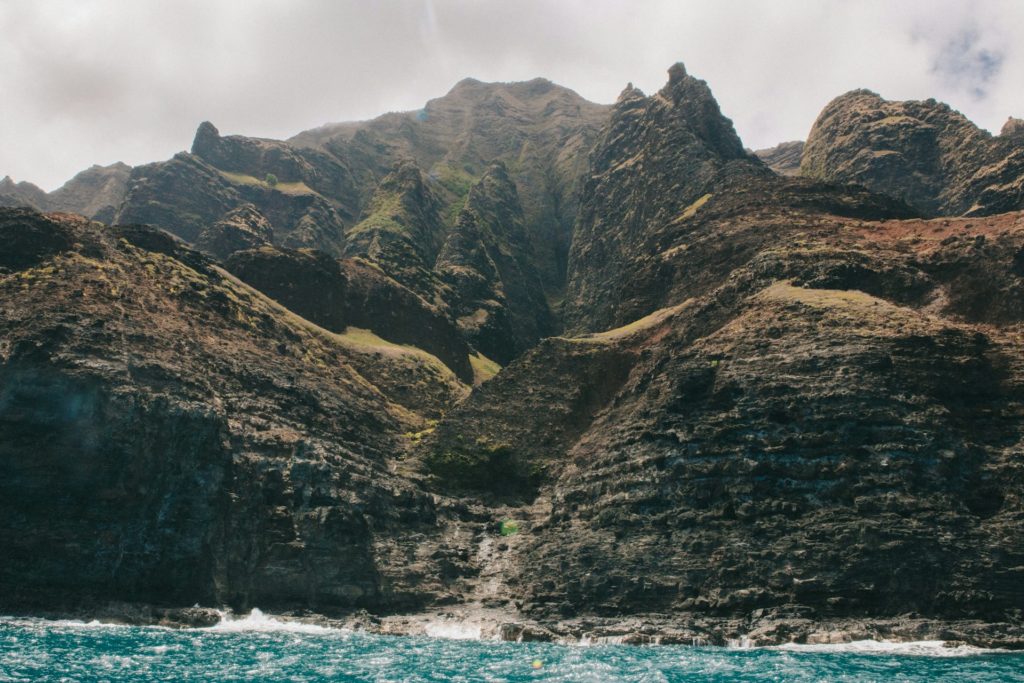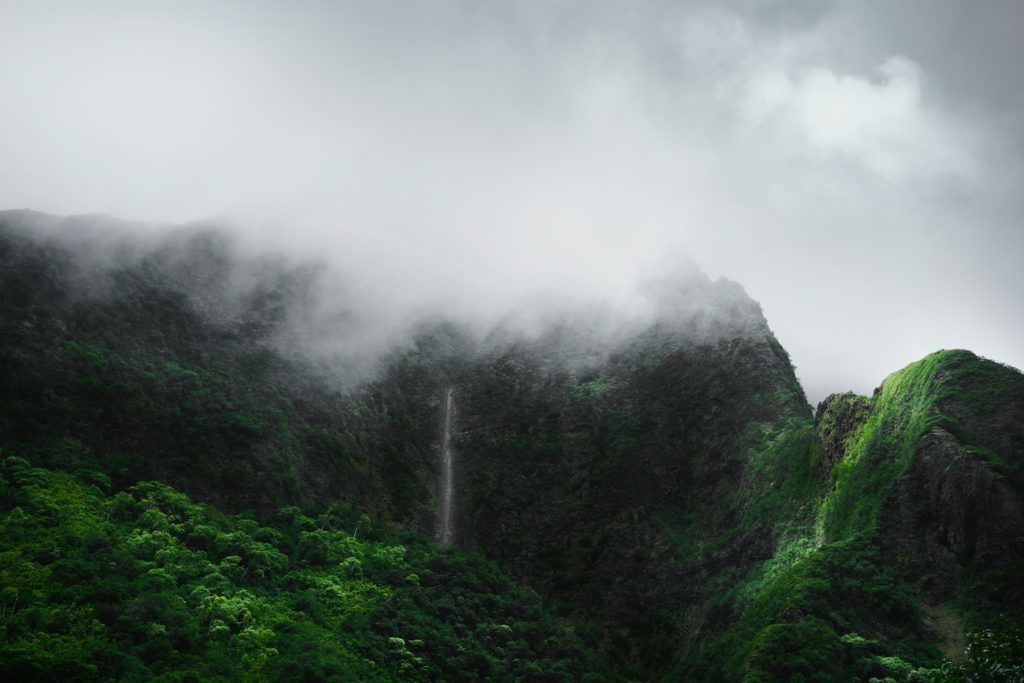Kauai, often referred to as the “Garden Isle,” is a verdant paradise among the Hawaiian Islands, captivating visitors with its lush landscapes and natural beauty. The island spans roughly 552 square miles, making it the fourth-largest in the Hawaiian archipelago. Kauai’s round shape is punctuated by the dramatic Napali Coast on the northwest shore, a stunning testament to the island’s volcanic origins in the Pacific Ocean.
The “Garden Island” is renowned for its diversity of ecosystems, from the towering sea cliffs along the Napali Coast to the serene botanical gardens nestled within its interior. Kauai is a haven for outdoor enthusiasts, offering a multitude of hiking trails that meander through rainforests and reach secluded beaches. Its size allows for intimate exploration yet contains vast landscapes that feel worlds apart from everyday life.
Kauai’s Size and Geography
Kauai’s geography is as diverse as it is stunning, stretching approximately 33 miles long and 25 miles wide at its farthest points. Its topography is marked by the dramatic Waimea Canyon, often referred to as the “Grand Canyon of the Pacific,” which plunges into depths of over 3,600 feet. The island’s rugged interior is largely inaccessible, preserving its natural splendor.
Surrounded by the vast Pacific Ocean, Kauai’s shoreline is a tapestry of golden sands and coral reefs. The island’s highest peak, Mount Waialeale, is known as the wettest spot on earth, contributing to the island’s rich biodiversity and the abundance of cascading waterfalls that feed into its rivers and valleys.

The Economy of Kauai
The economy of Kauai is primarily driven by tourism, which flourishes due to the island’s natural attractions and welcoming spirit. The Garden Isle invites visitors to experience its traditional Hawaiian culture, national parks, and the renowned South Shore, which is a hub for hospitality and leisure activities. Agriculture also plays a significant role, with the cultivation of tropical fruits, coffee, and taro.
Additionally, Kauai fosters a growing film industry, with its exotic landscapes serving as the backdrop for numerous Hollywood movies. This not only bolsters the local economy but also enhances the island’s allure as a destination for movie buffs and adventure seekers alike.
The Population of Kauai
Kauai is home to a small yet diverse population of approximately 73,000 residents. The island’s people are known for their warm aloha spirit and deep-rooted connection to the land. Communities are spread across quaint towns and rural areas, each with its unique charm and character.
Despite its modest population, Kauai embraces a rich melting pot of cultures, reflected in its cuisine, festivals, and arts. This cultural tapestry adds depth to the island’s identity, making it not just a place to visit, but a place to feel a sense of belonging and community.
Transportation and Access
Accessing Kauai is primarily done by air, with Lihue Airport serving as the island’s main gateway. Once on the island, a network of highways and scenic byways connects visitors to its numerous attractions.
Taking to the Skies: Air Travel to Kauai
Lihue Airport welcomes flights from mainland USA and inter-island services, making air travel the most efficient way to reach Kauai. The airport is well-equipped to handle the influx of tourists eager to explore the island’s natural wonders.
Roadways and Scenic Drives: Highways and the Hawaii Scenic Byway
Kauai’s roadways offer more than mere transportation; they are gateways to adventure. The Hawaii Scenic Byway, for instance, runs along the coast, providing breathtaking views and access to the island’s renowned beaches, such as Hanalei Bay and Poipu Beach.
How to Get Around Kauai
Getting around Kauai is best experienced by car, allowing for flexibility and the ability to explore the island’s many hidden gems at your own pace. Rental cars are readily available, and the island’s roads connect visitors to key attractions, from the Kalalau Trail to the cascading waterfalls hidden within its lush interior.
Public transportation does exist in the form of the Kauai Bus, which services major communities and popular tourist spots. Yet, the bus routes are limited and may not reach some of the more secluded areas that make a Kauai vacation so special. Taxis and ride-sharing services are also options, though less common outside of the main towns.
For those seeking a more active mode of transport, bicycles are a viable option for short distances, especially in the flatter regions like the Coconut Coast. Regardless of your choice, traveling around Kauai is an integral part of the experience, revealing the island’s beauty at every turn.

Frequently Asked Questions
While Kauai is a year-round destination, the rainy season from November to March may be less ideal for some travelers. During this time, the island experiences heavier rainfall, which can lead to occasional flooding and limited access to hiking trails and other outdoor activities. Visitors looking for sunny beach weather may prefer to visit during the drier months.
Additionally, the peak tourist seasons, particularly during winter holidays and summer, see higher prices and crowded attractions. Travelers seeking a quieter, more cost-effective experience might consider planning their visit during the shoulder seasons in late spring or early fall.
Absolutely, Kauai is a jewel in the Hawaiian archipelago, offering a unique blend of natural beauty and cultural richness. From the serene Hanalei Bay to the majestic Waimea Canyon, there’s no shortage of breathtaking sights. Kauai’s allure lies in its abundant greenery, dramatic landscapes, and a slower pace of life that invites relaxation and reflection.
Whether it’s the thrill of hiking the rugged Kalalau Trail or the tranquility of a sunset on a secluded beach, Kauai provides an array of experiences that cater to adventure seekers and those looking to unwind alike. The island’s charm is undeniable, making it a must-see for anyone visiting Hawaii.
To fully experience the breadth of what Kauai has to offer, having a car is highly recommended. The island’s many attractions, from the remote beaches to the stunning scenic waterfalls, are spread out, and public transportation does not cover all areas. A car allows the flexibility to explore at one’s own pace and access less frequented spots that can make a Kauai vacation truly memorable.
However, for those staying in resort areas or planning to relax on nearby beaches, a car might not be necessary. Some visitors choose to rely on shuttle services, taxis, or tours to navigate the island, especially if they are focusing on a specific area like the South Shore or the vicinity of their accommodation.
Driving around the entire island of Kauai is not possible due to the Na Pali Coast’s rugged terrain, which lacks roads. However, a drive from the North Shore’s Hanalei Bay to the West Side’s Waimea Canyon can take approximately 2 to 3 hours without stops. This journey covers a significant portion of the island’s main routes and showcases a variety of landscapes.
For those interested in a leisurely exploration, including stops at scenic waterfalls, lookouts, and beaches, a full day or more may be necessary. Kauai’s roads invite travelers to take their time, with each turn revealing new vistas and the promise of yet another hidden gem to discover on this enchanting island.
Final Impressions
Kauai, the northernmost gem in the Hawaiian island chain, offers a breathtaking mosaic of natural wonders and vibrant Hawaiian culture that leaves an indelible mark on its visitors. The island’s heart beats in the rhythm of cascading waterfalls like Wailua Falls and Opaekaa Falls, and the serene beauty of the Sleeping Giant trailhead. Its west coast is home to the Pacific Missile Range Facility, a reminder of Hawaii’s strategic importance since Pearl Harbor, yet it’s the timeless allure of the Na Pali Coast State Park and the serenity of Polihale State Park that truly captures the island’s spirit. Whether it’s a boat tour along the Na Pali Coast or a leisurely day spent on one of the island’s pristine golf courses, Kauai activities are as diverse as they are unforgettable.
The island’s reputation as a backdrop for cinematic masterpieces like Jurassic Park is well-deserved, with the Coconut Coast and Keʻe Beach offering snapshots of paradise that seem to leap from the silver screen. The annual average rainfall has eroded deep valleys in the center of the island, carving out landscapes that are both majestic and nurturing to the rich, green tapestry that earns Kauai its nickname, the Garden Isle. From the mouth of the Waimea River, where the flow formed Waimea Town, to the awe-inspiring cliffs of the Nā Pali Coast, Kauai encapsulates the enchanting beauty of the Hawaiian archipelago, visiting here not just worthwhile, but essential for anyone seeking to experience Hawaii’s tourism at its most authentic and dynamic.
